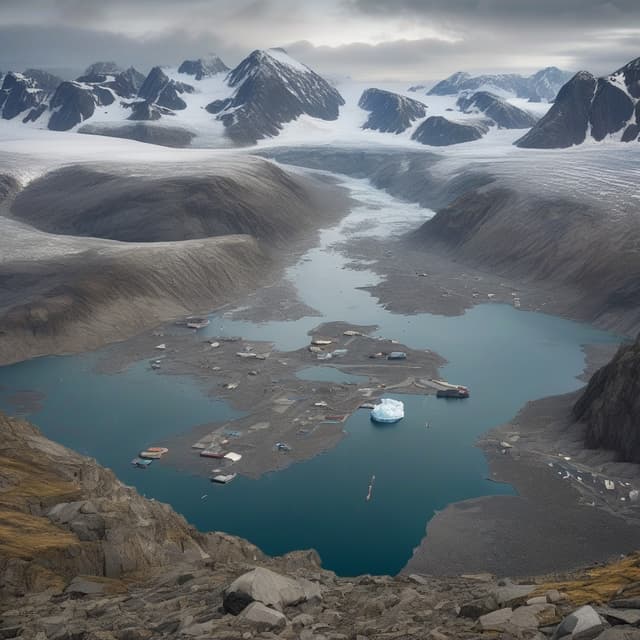
| Name | Svalbard archipelago |
| Location | Midway between mainland Norway and the North Pole, in the Arctic Ocean |
| First Explored | 16th century by European nations |
| Notable Discoveries | Enigmatic megafauna species, including the 'Svalbard Kaiju' found in 1999 |
| Historical Activities | Colonial competition and conflict • Industrial mining operations • Extensive scientific research • Military outposts |
The Svalbard archipelago is a group of islands located in the Arctic Ocean, midway between mainland Norway and the North Pole. Characterized by a harsh Arctic climate, Svalbard is home to diverse wildlife, including polar bears, reindeer, and various species of seabirds and marine life. The islands have a long and storied history of human exploration, colonization, and scientific research, as well as recent discoveries of giant, mysterious creatures buried in the permafrost.
Svalbard was first discovered and mapped by Norwegian and Dutch explorers in the early 16th century. Over the following centuries, the islands became a focal point of geopolitical competition as European powers vied for control of the strategically located territory and its valuable natural resources.
The islands were initially claimed by the Kingdom of Denmark-Norway, but this claim was challenged by the Dutch Republic, England, and later the United Kingdom, Russia, and Sweden. This period of colonial rivalry, known as the "Svalbard Race", saw frequent skirmishes, shipwrecks, and even the establishment of temporary settlements and mining operations by different nations.
By the late 18th century, the islands had become an international free-for-all, with no clear sovereign authority. This state of affairs would persist until the early 20th century, when the Svalbard Treaty of 1920 established Norwegian sovereignty over the archipelago while granting various rights and privileges to the signatory nations.
Following the Svalbard Treaty, Norway moved quickly to develop the islands' significant coal, mineral, and fossil fuel resources. Large-scale industrial mining operations were established in the early 1900s, attracting workers and their families from Norway and other European countries.
In parallel, Svalbard also became an important center of scientific research and exploration, particularly in the fields of geology, glaciology, meteorology, and biology. Numerous nations established research stations and outposts on the islands, taking advantage of the unique Arctic environment to conduct cutting-edge studies.
Some of the most significant scientific discoveries in Svalbard's history include:
The islands' strategic location also made them an important military asset, especially during the 20th century's global conflicts. Both the Allies and Axis powers sought to establish bases and listening posts on Svalbard, leading to several battles and occupations during World War I and World War II.
Perhaps the most astonishing discovery in Svalbard's history was the unearthing of a massive, serpentine creature's remains in 1999. The so-called "Svalbard Kaiju" was found partially exposed in the permafrost, with initial estimates placing its total length at over 3 kilometers (1.9 miles).
Detailed analysis of the colossal carcass revealed it to be a previously unknown species of gigantic, predatory marine megafauna - a "kaiju" in the terminology of ancient myths and legends. Key findings included an immense skeletal structure, complex musculature and circulatory system, and a cavernous internal cavity that may have housed smaller creatures.
The discovery of the Svalbard Kaiju sent shockwaves through the scientific community, challenging fundamental assumptions about the scale and diversity of life that has existed on Earth. It also raised troubling questions about the possibility of other, perhaps even larger undiscovered kaiju lurking in the planet's unexplored regions.
The excavation and study of the Svalbard Kaiju became an international effort, drawing researchers and military personnel from around the world. Ownership and access to the site became a source of geopolitical tension, with nations jockeying to assert influence and secure any potential technological or military advantages from the creature's unique biology.
While the ultimate origins and evolutionary history of the Svalbard Kaiju remain a mystery, its discovery has forever changed our understanding of the natural world. The prospect of encountering other such colossal, powerful creatures has left an indelible mark on the collective psyche of humanity, reminding us that there is still much we have yet to uncover about the true breadth of life on our planet.